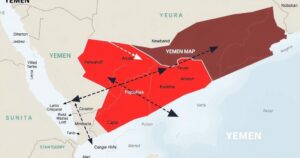Trump’s Middle East Strategy: A Closer Look at His Real Goals

Donald Trump’s provocative plan for Gaza serves as a backdrop for his more feasible objectives: a nuclear deal with Iran and increased Israeli control in the West Bank. By repeatedly framing his Gaza proposal, Trump effectively shifts perceptions of Palestinian claims and sets the stage for potential agreements that could reshape Middle Eastern dynamics, fostering both opportunities and tensions in the region.
Former President Donald Trump has proposed an extraordinary plan involving Gaza, suggesting the U.S. should take control of the region and transform it into a luxurious destination. Though such a vision is impractical, it may serve to distract and set the stage for Trump’s more realistic aims in the Middle East: negotiating a nuclear deal with Iran and expanding Israeli control in the West Bank.
Trump has openly expressed his intention to secure an agreement with Iran, seeking to alleviate sanctions and promote regional stability. He indicated in a recent press conference his willingness to negotiate, fully aware that Israeli conservatives may oppose any such deal. To placate them, Trump hinted at potential plans to enhance Israeli sovereignty over the West Bank, which would undoubtedly have significant implications for the Palestinian population.
By continuously reiterating his provocative Gaza proposal, Trump aims to shift perceptions of Palestinian territorial claims, making them appear less viable. This tactic echoes his approach of normalizing shock value statements until they lose their potency in public discourse. In the context of securing a nuclear agreement, Trump is leveraging the urgency created by Tehran’s weakened international standing.
Given Iran’s current vulnerability, Trump finds himself in an advantageous position to negotiate a favorable deal. The Islamic Republic has faced substantial setbacks in maintaining its regional influence and has signaled an openness to talk. Meanwhile, Trump seeks to avoid conflict and could position himself as an effective dealmaker by claiming success in a domain where previous administrations struggled.
A possible agreement could require Iran to halt uranium enrichment and place its nuclear facilities under stringent monitoring. While challenges remain, such as the status of Iran’s missile arsenal, the deterioration of its missile capabilities due to external pressures could offer a pathway toward a constructive resolution. Aligning the terms of the agreement with Israeli interests will be crucial for Trump to manage domestic backlash.
Should he succeed, Trump may reference his earlier “Peace to Prosperity” plan, which proposes significant territorial changes in the West Bank, thereby expanding Israeli governance. While Palestinians will likely resist, the combination of Israeli control and U.S. support could facilitate implementation of this plan. Ultimately, Trump’s Gaza fantasy might overshadow legitimate concerns for the Palestinian territories, producing far-reaching consequences for the region as a whole.
In conclusion, Donald Trump’s proposals regarding Gaza, while seemingly fantastical, may serve as a strategic distraction from his two primary objectives in the Middle East: negotiating a nuclear agreement with Iran and expanding Israeli control over the West Bank. By reframing Palestinian concerns, he risks exacerbating an already volatile situation for the region and its inhabitants. Thus, Trump’s rhetoric and proposed policies could lead to significant geopolitical changes that affect peace and stability.
Original Source: www.theatlantic.com








